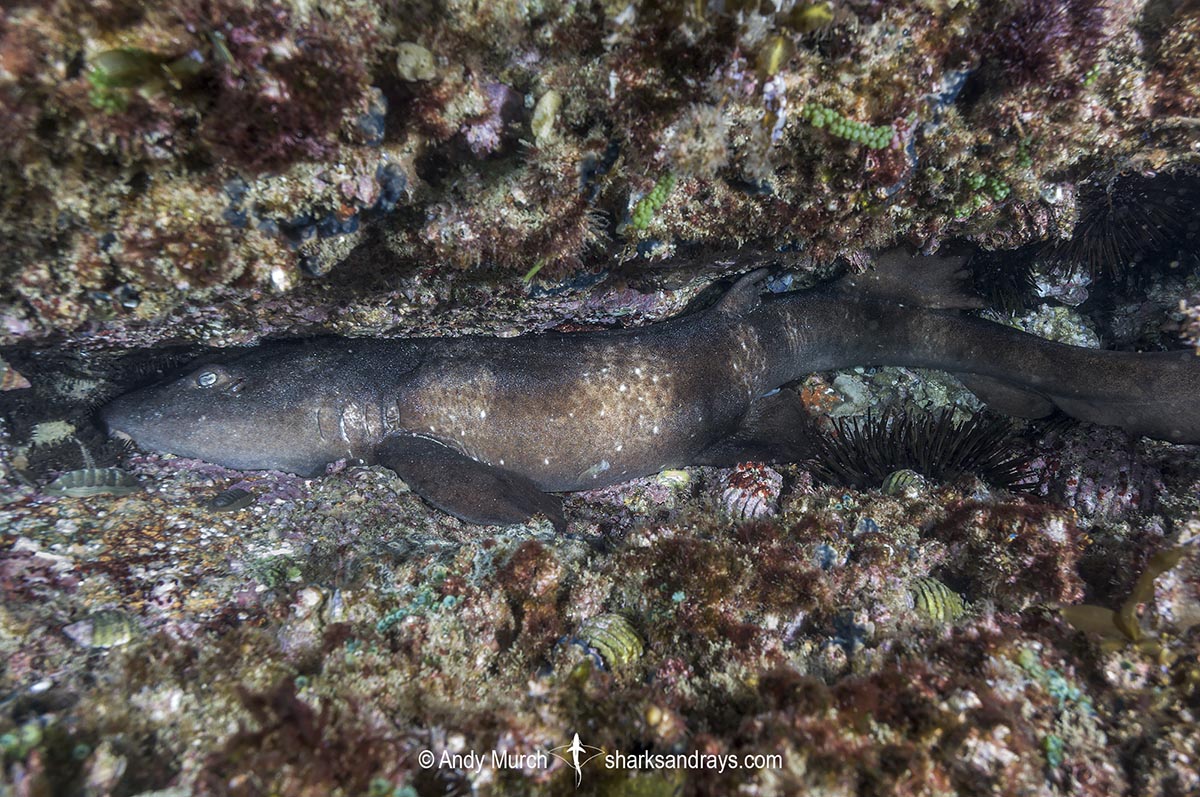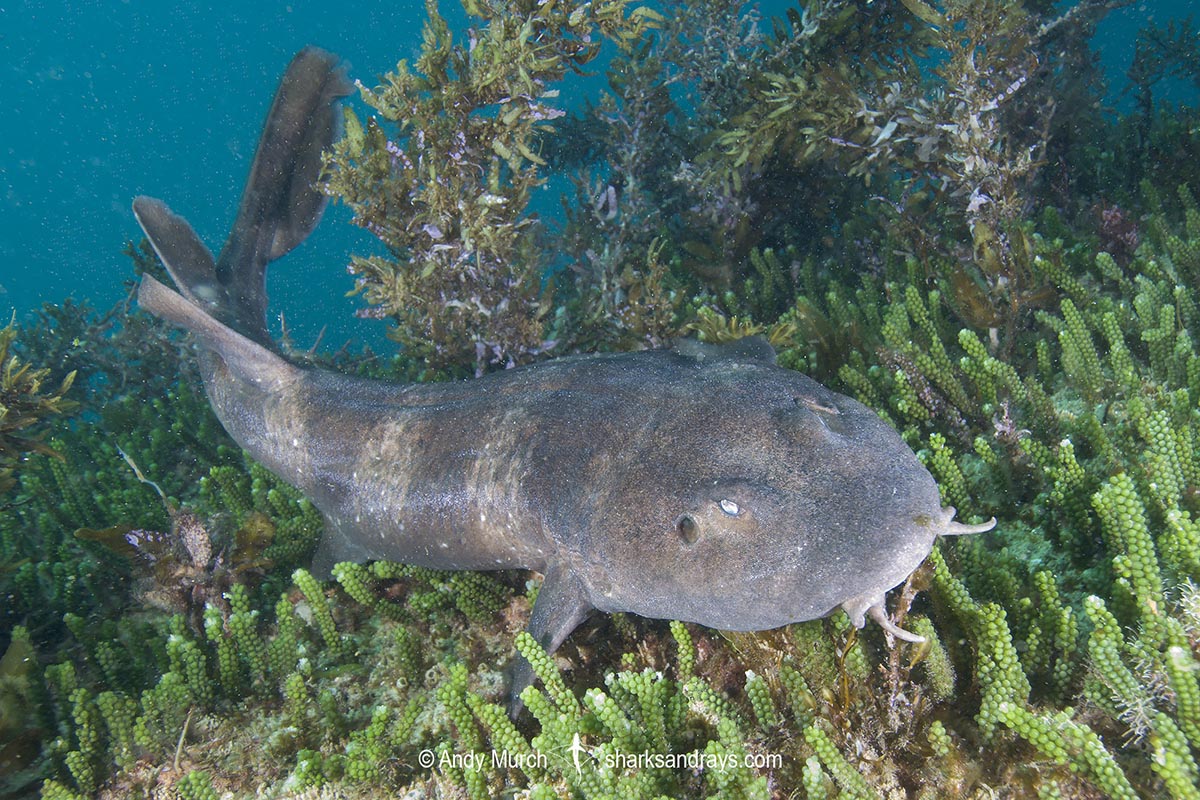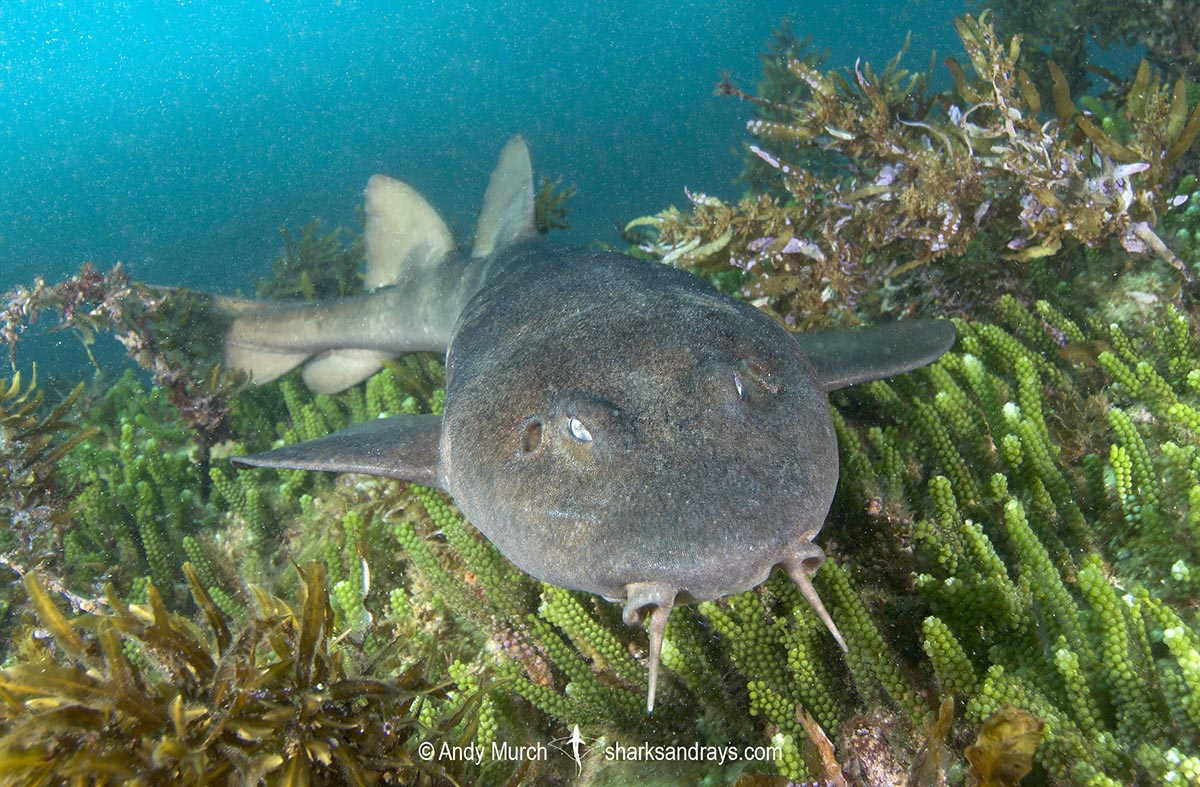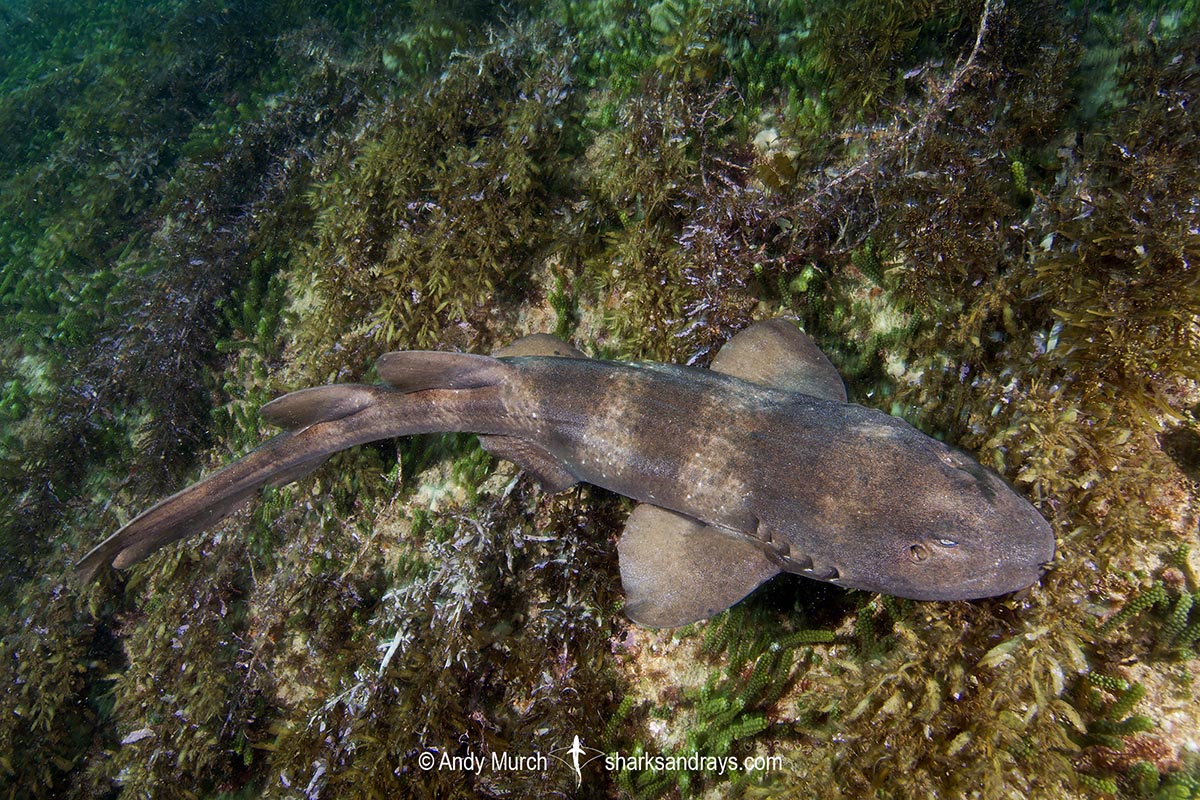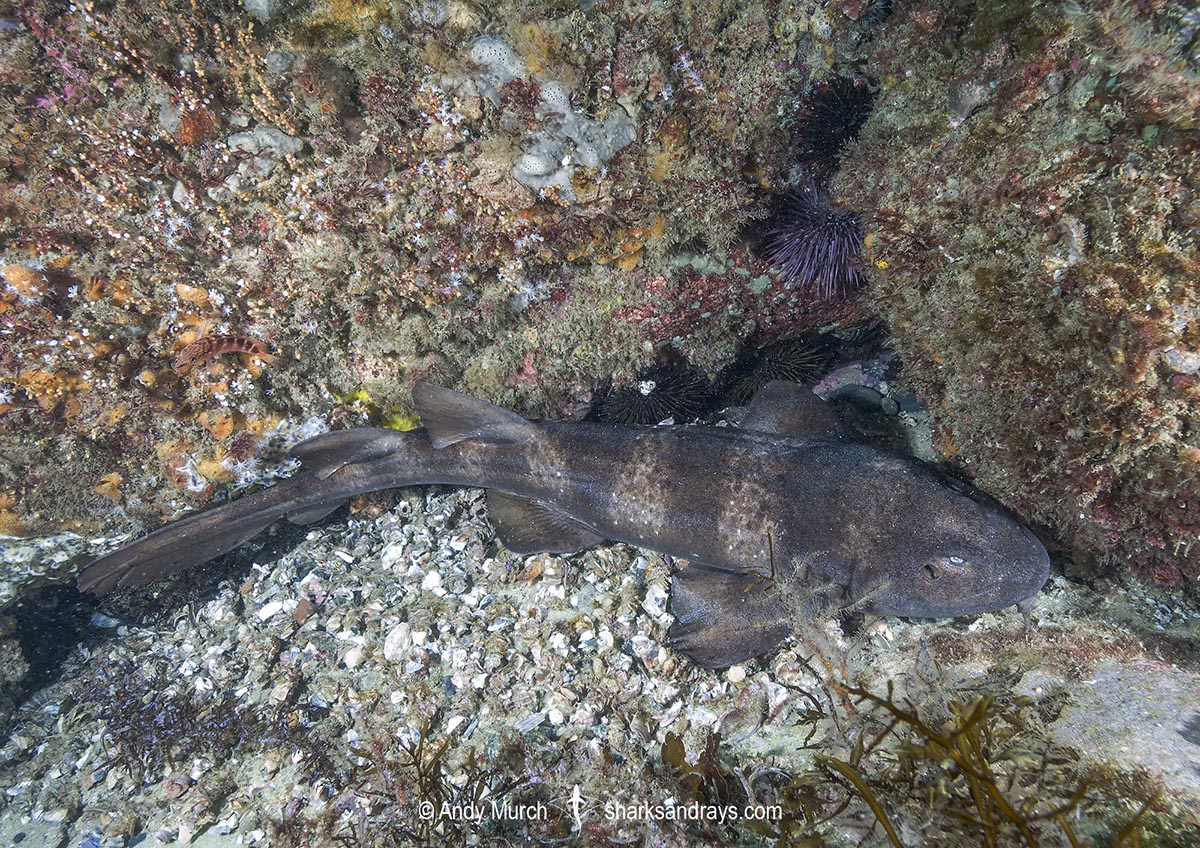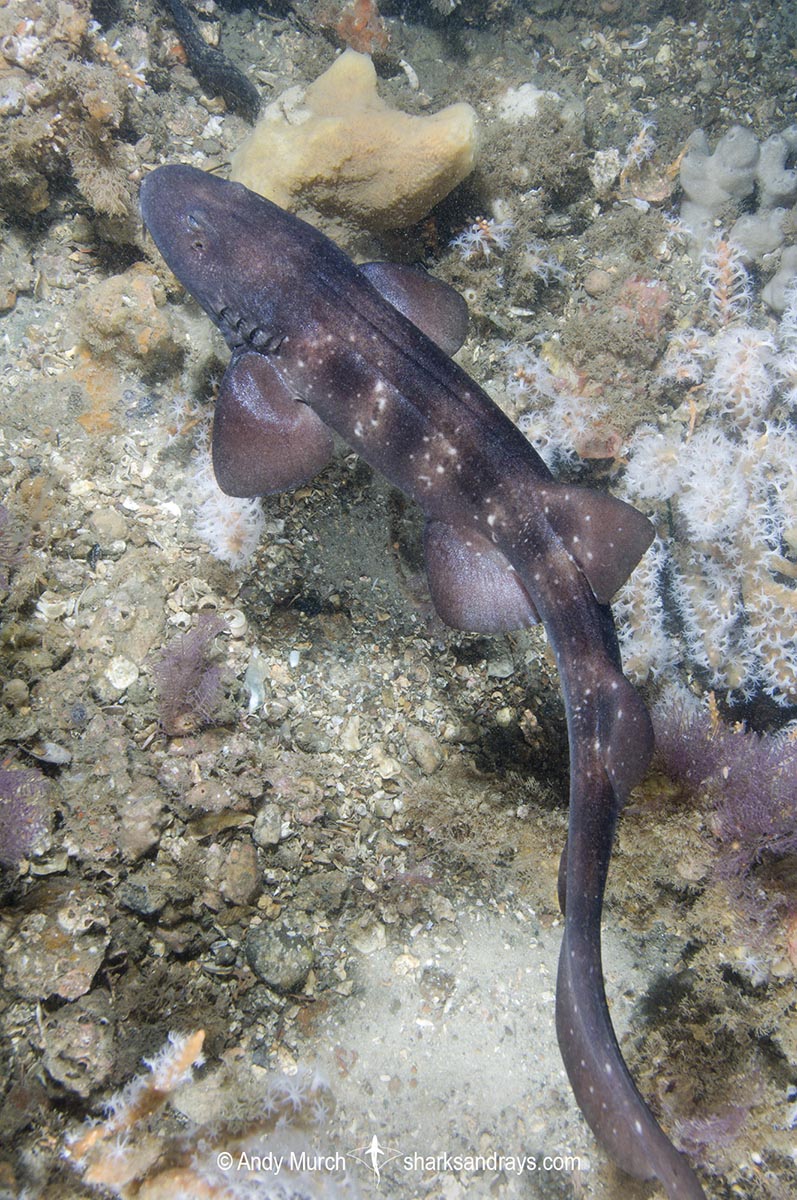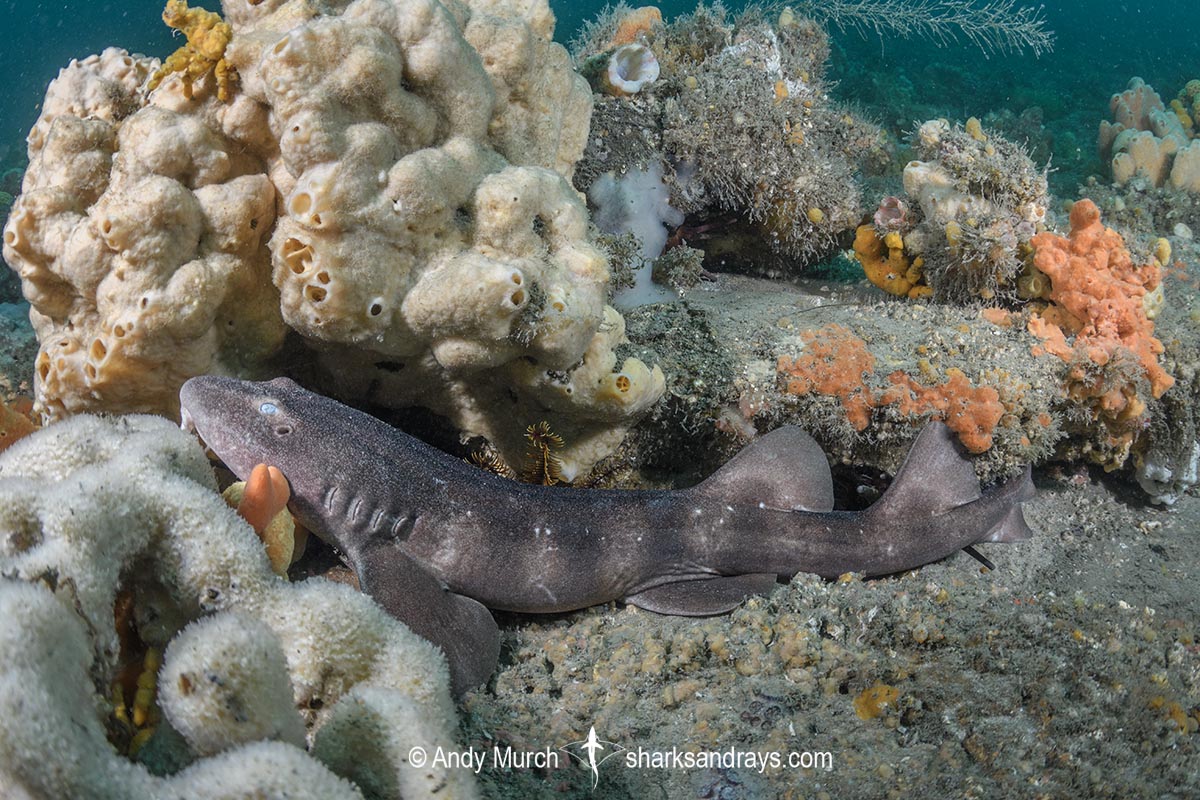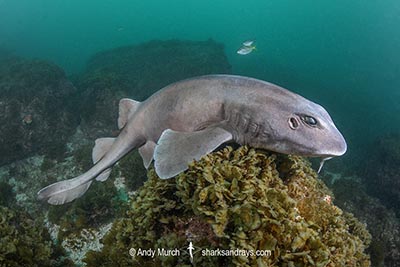Common names
Blind Shark.
Binomial
Brachaelurus waddi.
Synonyms
Identification
Head broad. Snout short and rounded. Nasal flaps form very long, prominent barbells. Spiracles large. Two high dorsal fins of roughly equal size set well back on body. Origin of first dorsal anterior to pelvic fin insertion.
Dorsal coloration mottled grey/brown with prominent but sometimes indistinct darker saddles and small white spots. Markings fade with age and large adults may display an almost uniform dark grey/brown coloration. Ventrum pale but slightly mottled.
Size
Maximum length 122cm. Size at birth 15-18cm.
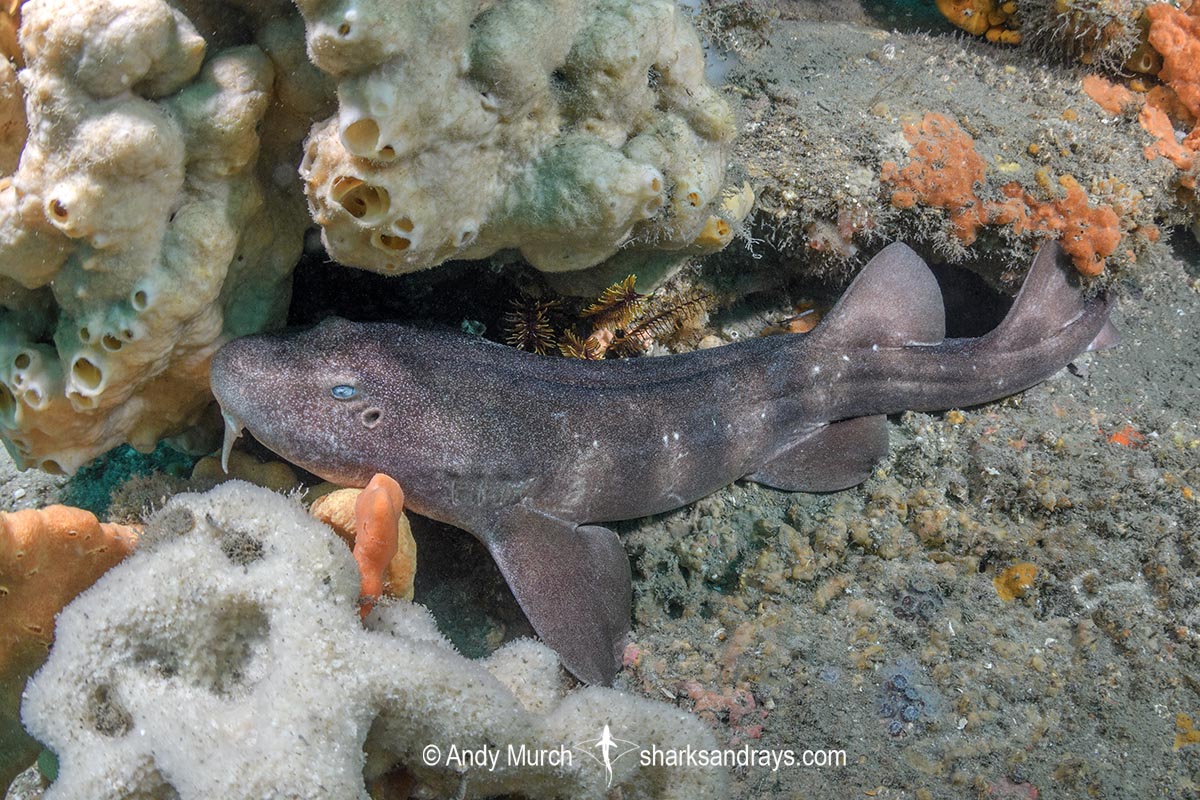
Conservation Status
LEAST CONCERN
Although the blind shark is a regular bycatch in trap fishing in New South Wales, it can survive for extended periods in captivity and is generally released unharmed. It is also a popular species in the marine aquarium trade.
Brachaelurus waddi populations appear to be stable and relatively abundant, partially due the blind shark’s preference for rocky habitats which offer protection from most types of fishing.
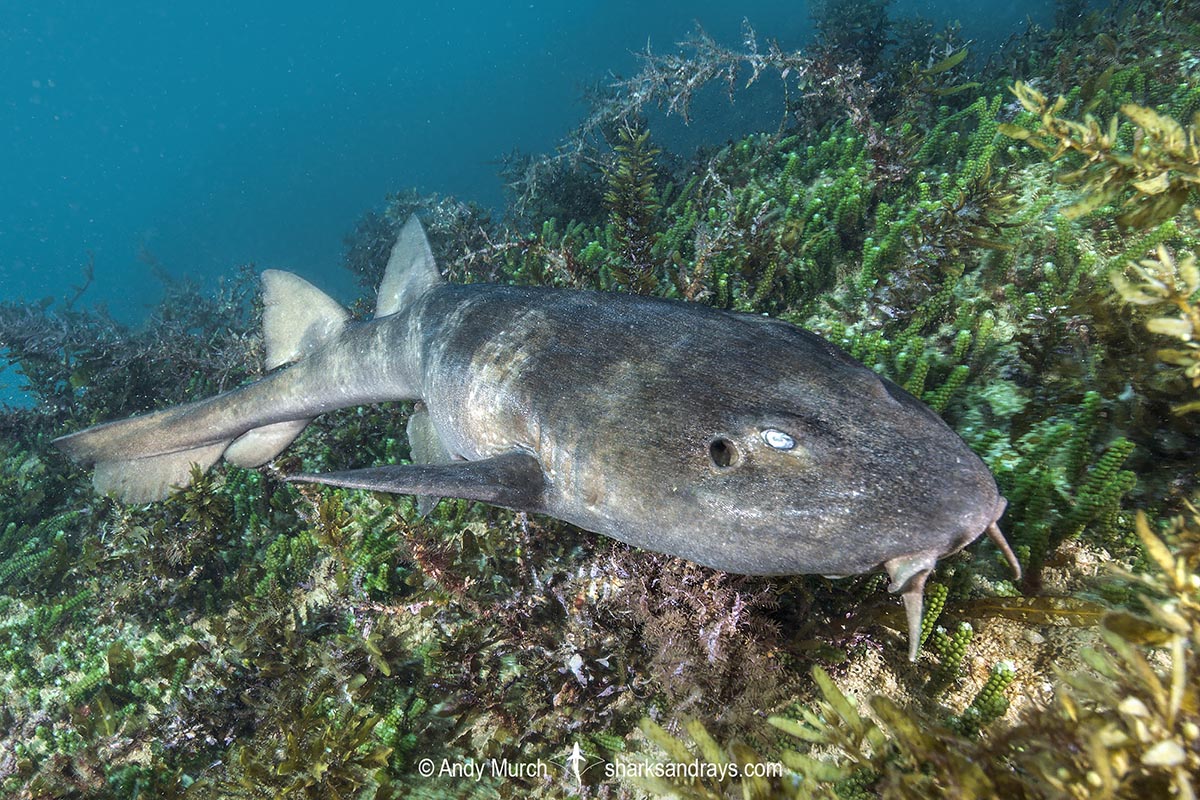
Habitat
A temperate/tropical species found on rocky and coral reefs and sea grass beds. Often in surge swept turbid areas. Intertidal to 150m..
Distribution
A common inhabitant of inshore reefs along the east coast of Australia. Found from southern Queensland to southern New South Wales.
Unconfirmed reports from the Northern Territory and Western Australia.
Reproduction
Aplacental viviparous species (without a yolk-sac placenta). 7-8 pups per litter.
Diet
Feeds on small fishes, crustaceans, squid, and sea anemones.
Behavior
Nocturnal. Juveniles lodge themselves in shallow reef crevices by day. Larger adults rest in caves. In Nelson Bay, NSW. Blind sharks tend to rest out in the open laying on sponges.
The blind shark gets its common name from its habit of closing its eyes when held out of the water.
Reaction to divers
When encountered during the day, blind sharks generally remain motionless or try to bury deeper into their hiding places. At night they can sometimes be closely observed foraging on the reef but they are generally wary.
CAUTION: Manhandling Sharks is never a good idea. Divers that have removed resting sharks from crevices have been bitten. There are reports of blind sharks latching onto diver’s wetsuits and refusing to let go until taken to the surface. Even then they had to have their jaws pried apart. One report of a shark letting go once it was doused in fresh water.
Diving logistics
Blind sharks are regularly encountered by divers in NSW and Queensland. The shallow reefs around South West Rocks are a good place to look. Some of these dives can be done from shore but the best encounters are slightly deeper and require boat access. Green Island is an exceptionally good site that may turn up 4 or 5 Blind Sharks on one dive as well as many wobbegong sharks and grey nurse sharks.
Bait Reef in SW Rocks is also a good place to look and is accessible by boat or from shore if conditions permit. It can be accessed by parking in the grounds of the old jail and swimming out from the rocks.
Julian Rocks in Byron Bay is another great spot to look for Blind Sharks and also has a resident population of Colclough’s Sharks during the summer months. Sundive Byron Bay has been monitoring this population and can show you their exact locations.
I have also seen Blind Sharks at Fly Point in Nelson Bay.
What’s new
View our full list of updates
Similar species
Colclough’s Shark Very similar but distinguished by lack of white spots, and more obtusely pointed dorsal fin tips with sloped posterior margins.

